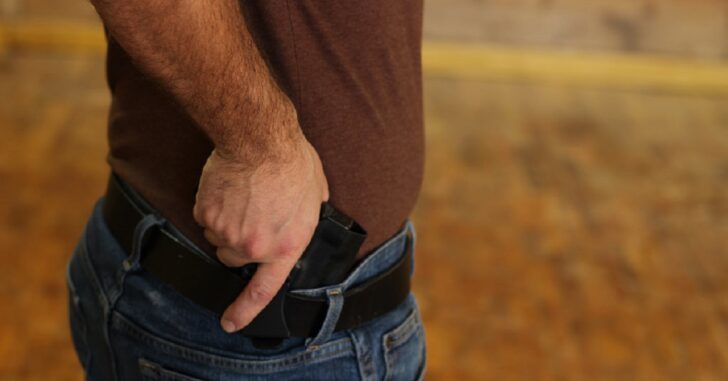I posted an article on Facebook yesterday, and we had some comments come in. The comments refer to a ‘shoot to kill’ mentality, and I’m here to tell you that it’s the wrong mindset to have when dealing with a self-defense shooting.
There is no room for ‘shoot to kill’ or ‘shoot to wound’ in any scenario dealing with self-defense and your firearm. It’s always ‘shoot to stop the threat’.
If the threat is stopped with a shot to the shoulder and he or she becomes incapacitated and no longer capable of hurting you, that’s when you stop shooting. If displaying your firearm is enough to make the bad guy drop his, that’s where you stop unless things escalate.
There’s a simple rule to follow:
If your life is no longer in danger, there’s no longer a reason to pull the trigger. If you do, that could spell murder.
If you’re looking to ‘shoot to wound’, your outcome might not be what you expect. If you’re aiming for the legs, for example, remember that they house the femoral artery, which can cause a person to bleed out and die in a matter of minutes. You also run the risk of missing your target, since you’re trying for a specific location that’s likely moving more than other parts of the body.
Plenty of self-defense situations with a firearm are ended without any shots being fired, and others are ended with a single shot –regardless of where it strikes. One thing the bad guys don’t want is a bullet hole.
There’s a very real probability that if you ever do end up pulling the trigger, you’re likely to pull it more than once. There are a million factors here, but we’ll assume that the threat is close and you are in imminent danger. A ‘double-tap’ (pulling the trigger twice in quick succession) is a common occurrence. If we’re that fearful, we’re going to make sure that the threat is stopped. If they continue and the threat remains, you would likely be justified to keep firing until that threat is stopped.
The point to take away? There is no need to empty your magazine until there is an absolute need to empty your magazine. If the threat is on the ground after firing a shot or two (if it even gets to that) and does not have a gun pointed at you or any other visible threat that can reach you, you’re not allowed to fire on the downed threat. That can turn into murder very quickly, or at the very least excessive use of force.
As a side note, it’s also important to be mindful of the comments we make on social media. If you do ever find yourself in a self-defense situation where you pulled the trigger, you run a very good chance of anything negative coming back to bite you. For example; If you comment ‘He should have emptied his mag’ on an article talking about a self-defense story, the prosecution will most likely use that as part of their case if they see it. It won’t go well for you if you’re on trial.
DISCLAIMER: Please research your local laws regarding the use of lethal self-defense. Discharging your firearm in a self-defense situation is an absolute last resort. Your life will immediately change forever. We are not lawyers, and cannot offer legal advice. None of the information above is legal advice. We are also going to offer opinions, but these are just our opinions. Use your own judgement and common sense when making any decisions.

